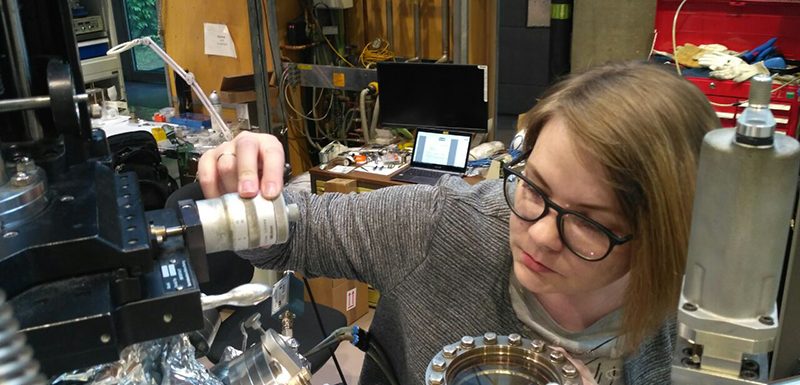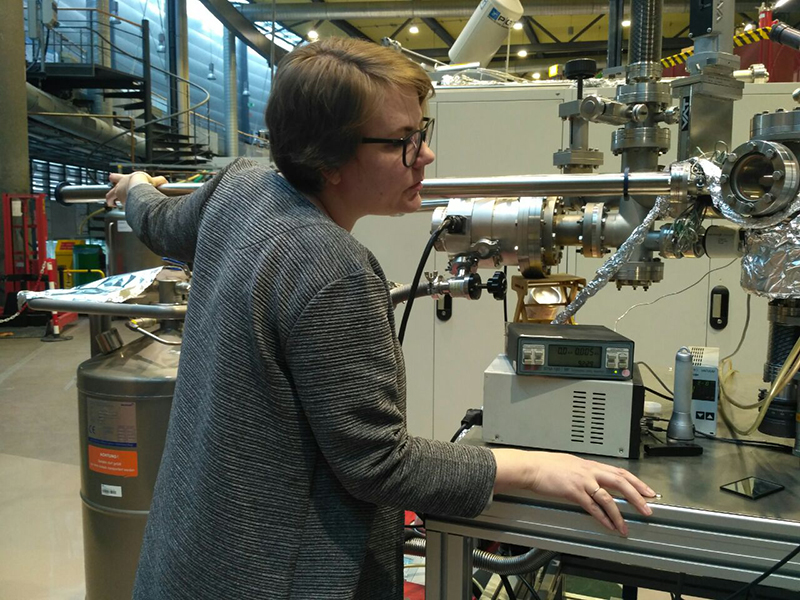
At BESSY II, we are operating some 50 beamlines, each of which offers the latest methods in spectroscopy and microscopy.
Each beamline has a dedicated beamline scientist, who not only manages all the projects on the beamline and knows its every secret, but also works with local and visiting scientists to get the best results out of the beam and its instruments for every specific research question they have. Without the beamline scientists, much of the science at BESSY II could never happen.
But who are they? What makes a good beamline scientist and where do they come from? In this little series you are going to find out. Today we introduce Anna Makarova who works at the Russian-German dipole beamline.
What’s the name of your beamline and what’s it like?
It is a Russian-German dipole beamline, part of the Russian-German Laboratory at BESSY II. It covers a soft X-ray photon energy range up to 1200 eV. It ends with a fixed experimental station RGL-PES that offers a multi-technique approach for the investigation of the electronic, chemical and structural properties of materials: X-ray photoemission spectroscopy and X-ray absorption in all possible modes (fluorescence yield, total and partial electron yields).
For which research applications is this beamline especially suitable?
The applications cover a wide range of research fields, including surface and interface science, materials research, bioinorganic chemistry, biomineralogy, etc. The experimental station contains several preparation chambers with various kinds of evaporators, a gas inlet system, a heating stage, an ion sputtering gun, and a fast-load systems, so that experimentalists are very flexible in synthesis and modification of the sample’s structure.
What’s your background, scientifically? How did you get to be a beamline scientist?
I did my PhD in physics at St. Petersburg State University, Russia. Then I’ve moved to Technische Universität Dresden where I have been working until now. I was an active user of the RGBL during my PhD studies and thereafter for several years, and now as a scientist of the Russian-German Laboratory I am taking care of the users. My current research is focused on graphene-like materials, modification of their properties, as well as curved crystal surfaces as substrates for 2D-materials growth.
“The most rewarding part is, when users are happy and bring you chocolates by the end of the beamtime.”
What is your work as a beamline scientist?
During the user operation period the main focus is on the organization of the beamtimes: planning experiments with users, arrangement of the corresponding technical preparations and user consultation during the beamtime. In addition to the user support we do the weekly commissioning of the beamline. Here I work closely with Dmitry Smirnov, another beamline scientist of RGBL. He is doing a lot of work to maintain and upgrade the station and the beamline. In parallel, we are planning the upgrades and future development of the beamline, the experimental station and the sample environment. Besides, each beamline scientist has his/her own research project and I’m no exception.

What are you working on at the moment?
At the moment we are in a normal user operation phase. However, we are planning the next commissioning period that will be devoted to alignment of the new optical element. The new M1 mirror chamber aims to achieve circular polarization. This will open up new possibilities of studies on magnetic materials.
What is your biggest challenge in working with the beamline?
To make the users happy 😉
What is the most rewarding part?
When users are happy and bring you chocolates by the end of the beamtime.
(kh)
